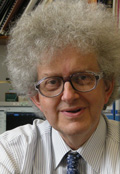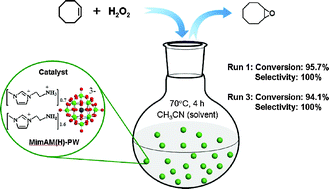Conference report by Ewa Gebauer-Henke and Mark Muldoon
The latest issue of Green Chemistry features papers from the “Green Solvents for Synthesis” conference that was held in October 2010. The bi-annual DECHEMA conference on green solvents has a reputation for attracting world leaders in the field of green chemistry and also for being held in beautiful locations in Germany. In 2008, the meeting was held in Friedrichshafen on Lake Constance, while this recent meeting was in the stunning town of Berchtesgaden in the German Bavarian Alps.

Berchtesgaden
Common themes throughout the conference were the use of ionic liquids, water, supercritical fluids (CO2 and water), CO2 expanded solvent systems and solvents from renewable sources. The meeting attracted a mix of industrialists, academics and graduate students from across the globe. Addressing the challenges in this area requires an interdisciplinary approach and attendees had a wide range of scientific and engineering backgrounds. The varied nature of the research presented at this meeting is clear from the contributions to this special issue. For those interested, the full conference programme can still be viewed online.
One of the things that seemed clear from the discussions and debates among participants was that this field is continuing to mature and strive for higher standards. Many of the discussions related to improving the overall greenness of processes and topics such as “life cycle analysis” and “energy” were often raised. The claim that a solvent is intrinsically green in itself is not something that holds up to scrutiny and therefore researchers are having to demonstrate how solvents can be used to improve a process overall; for example by allowing catalyst separation and recycling or delivering improved reaction rates and product selectivity.
The first lecture of the conference by Philip Jessop highlighted many of these issues and set the tone for the meeting. He outlined what he felt were the four “grand challenges” in the field of green solvents. Additionally, he had polled some of the leading academic researchers in the field of solvents prior to the conference, asking them what solvents they felt would have the biggest impact in the coming years. He then discussed the interesting results of this survey during his talk. The details of his lecture can be seen in his paper “Searching for green Solvents”.
Ionic liquids have gathered a great deal of interest in the last decade or so and a number of talks highlighted how these solvents can be used to improve the greenness of a process. For example, Peter Wasserscheid delivered a very well received talk on the topic of ionic liquids in the field of heterogeneous catalysis. He discussed both SILP (“Supported Ionic Liquid Phase”) technology and SCILLs (Solid Catalysts with Ionic Iiquid Layers’). For a number of years, researchers have been investigating the use of SILPs; which involves utilising a thin ionic liquid layer on a solid support to immobilise homogeneous transition metal catalysts. However, more recently, the SCILL approach has emerged, and this involves coating a “traditional” heterogeneous type catalyst with a layer of ionic liquid. The layer of ionic liquid can result in modification of the properties and performance of the heterogeneous catalyst. Peter’s talk illustrated well how ionic liquids could improve catalyst performance, therefore leading to a greener process.

The conference chairman Prof Walter Leitner
Continuous flow is often the best way to improve the efficiency of a process and “alternative solvent systems” can enable flow processes to be developed in ways not possible with conventional organic solvents. For example, Pedro Lozano described his group’s work on continuous flow enzymatic synthesis of biodiesel in mono- and multiphase systems using a combination of ionic liquids and supercritical CO2. While Lasse Greiner discussed the application of continuous flow systems for the synthesis of ionic liquids. He stressed how the transition from batch to continuous is only possible, when kinetic and thermodynamic studies have been carried out and showed how inline ATR-IR and calorimetry were powerful tools for such studies. He demonstrated that the synthesis of ionic liquids can be realized with consistent product specifications; necessary in large scale production.
The importance of in-situ techniques was also highlighted in Jan-Dierk Grunwald’s talk “Heterogeneous catalysis in dense carbon dioxide: opportunities, limitations and mechanistic understanding”. He presented work on both catalytic hydrogenations and oxidations in dense and supercritical CO2. As part of these studies, ATR-IR was used to determine phase behaviour and X-ray adsorption spectroscopy to study the catalyst under high pressure reaction conditions. Developing an in-depth understanding of reactions in such solvents is important if they are to be fully exploited in an industrial setting.
Ultimately, the aim of green chemistry is to have an impact in the real world and there are an increasing number of industrial processes that now utilise “alternative solvent” technologies. Several examples were highlighted during this conference including those that exploited supercritical water. This was particularly nice to see as this is a solvent system that is often labelled as an academic curiosity. More details of industrial scale processes for scH2O are described in the paper by Adschiri and co-workers.
Solvents play a crucial role to vast number of processes and they are therefore key in developing more sustainable chemical processes. We would highly recommend that researchers interested in the important area of green chemistry attend a future DECHEMA green solvents conference. The next one is scheduled for early October 2012 (and starts just as Oktoberfest in finishing in Munich). As mentioned, these meetings bring together leaders from academia and industry from across a range of disciplines. In fact many of these leading figures not only discuss their research but also entertain the participants! At this past it closed with a traditional Bavarian banquet dinner where some very well known academics entertained the attendees singing that Leitner and Howdle classic “Always Use Green Chemistry Tools”; something, previously highlighted by Kathleen Too in this blog (October 15th entry).
Ewa Gebauer-Henke
CAT Catalytic Center Postdoctoral Fellow
ITMC, RWTH Aachen University
Mark Muldoon
School of Chemistry and Chemical Engineering
Queen’s University Belfast
Pictures, courtesy of Prof Kenneth Seddon (QUILL, Queen’s University of Belfast)


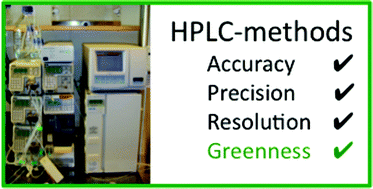










![[4+2+1] domino cyclisation in water](http://pubs.rsc.org/services/images/RSCpubs.ePlatform.Service.FreeContent.ImageService.svc/ImageService/image/GA?id=C1GC15183E)
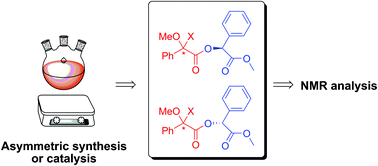


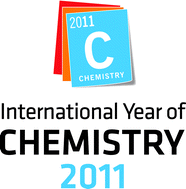 To mark the International Year of Chemistry in 2011, Green Chemistry has published a
To mark the International Year of Chemistry in 2011, Green Chemistry has published a 